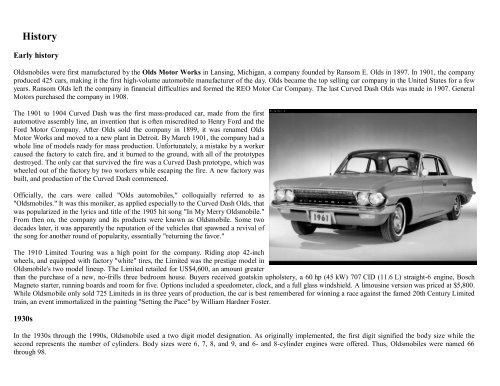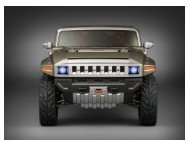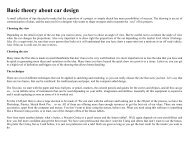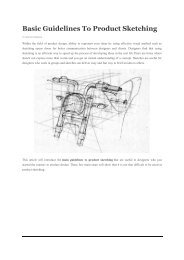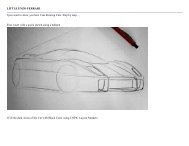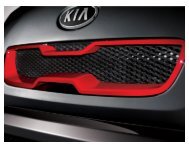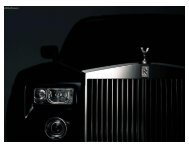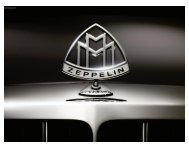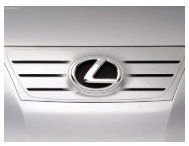Oldsmobile
Oldsmobile - ACDAC
Oldsmobile - ACDAC
- No tags were found...
You also want an ePaper? Increase the reach of your titles
YUMPU automatically turns print PDFs into web optimized ePapers that Google loves.
History<br />
Early history<br />
<strong>Oldsmobile</strong>s were first manufactured by the Olds Motor Works in Lansing, Michigan, a company founded by Ransom E. Olds in 1897. In 1901, the company<br />
produced 425 cars, making it the first high-volume automobile manufacturer of the day. Olds became the top selling car company in the United States for a few<br />
years. Ransom Olds left the company in financial difficulties and formed the REO Motor Car Company. The last Curved Dash Olds was made in 1907. General<br />
Motors purchased the company in 1908.<br />
The 1901 to 1904 Curved Dash was the first mass-produced car, made from the first<br />
automotive assembly line, an invention that is often miscredited to Henry Ford and the<br />
Ford Motor Company. After Olds sold the company in 1899, it was renamed Olds<br />
Motor Works and moved to a new plant in Detroit. By March 1901, the company had a<br />
whole line of models ready for mass production. Unfortunately, a mistake by a worker<br />
caused the factory to catch fire, and it burned to the ground, with all of the prototypes<br />
destroyed. The only car that survived the fire was a Curved Dash prototype, which was<br />
wheeled out of the factory by two workers while escaping the fire. A new factory was<br />
built, and production of the Curved Dash commenced.<br />
Officially, the cars were called "Olds automobiles," colloquially referred to as<br />
"<strong>Oldsmobile</strong>s." It was this moniker, as applied especially to the Curved Dash Olds, that<br />
was popularized in the lyrics and title of the 1905 hit song "In My Merry <strong>Oldsmobile</strong>."<br />
From then on, the company and its products were known as <strong>Oldsmobile</strong>. Some two<br />
decades later, it was apparently the reputation of the vehicles that spawned a revival of<br />
the song for another round of popularity, essentially "returning the favor."<br />
The 1910 Limited Touring was a high point for the company. Riding atop 42-inch<br />
wheels, and equipped with factory "white" tires, the Limited was the prestige model in<br />
<strong>Oldsmobile</strong>'s two model lineup. The Limited retailed for US$4,600, an amount greater<br />
than the purchase of a new, no-frills three bedroom house. Buyers received goatskin upholstery, a 60 hp (45 kW) 707 CID (11.6 L) straight-6 engine, Bosch<br />
Magneto starter, running boards and room for five. Options included a speedometer, clock, and a full glass windshield. A limousine version was priced at $5,800.<br />
While <strong>Oldsmobile</strong> only sold 725 Limiteds in its three years of production, the car is best remembered for winning a race against the famed 20th Century Limited<br />
train, an event immortalized in the painting "Setting the Pace" by William Hardner Foster.<br />
1930s<br />
In the 1930s through the 1990s, <strong>Oldsmobile</strong> used a two digit model designation. As originally implemented, the first digit signified the body size while the<br />
second represents the number of cylinders. Body sizes were 6, 7, 8, and 9, and 6- and 8-cylinder engines were offered. Thus, <strong>Oldsmobile</strong>s were named 66<br />
through 98.


